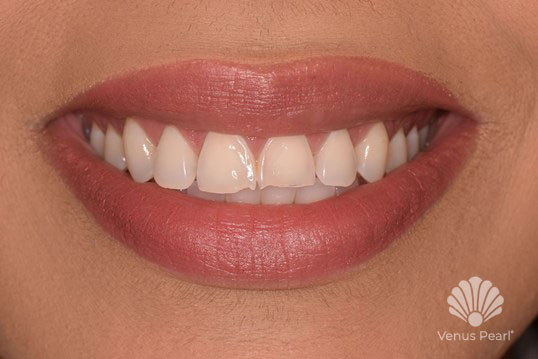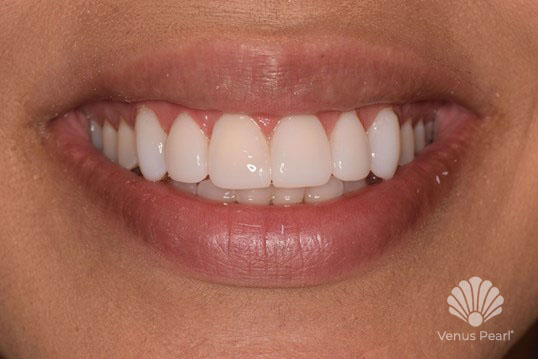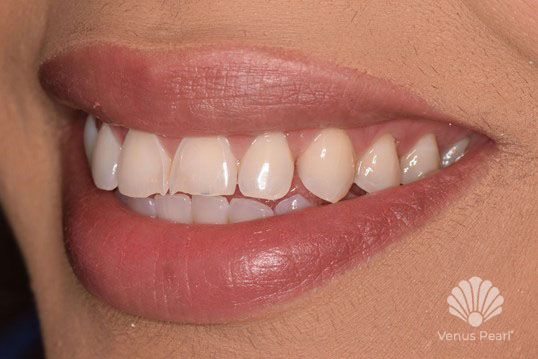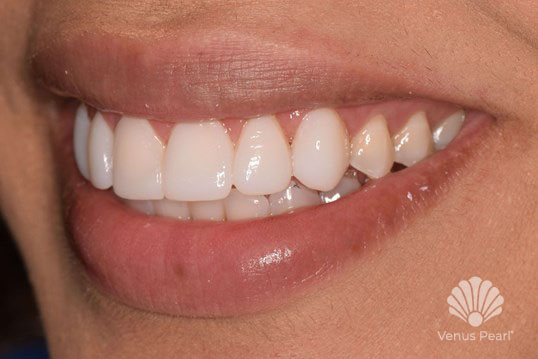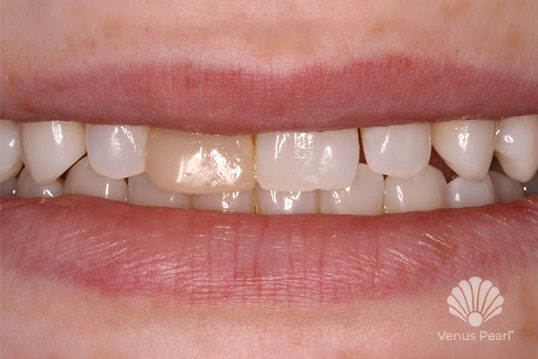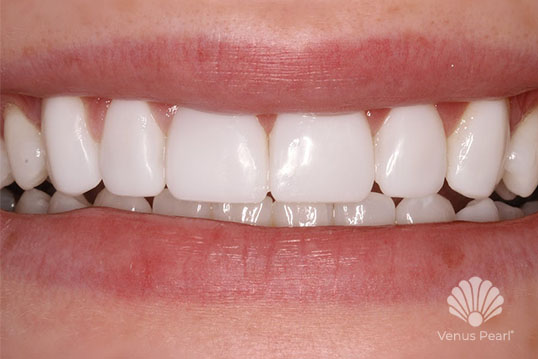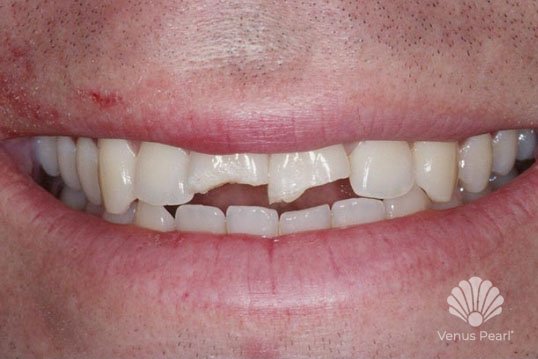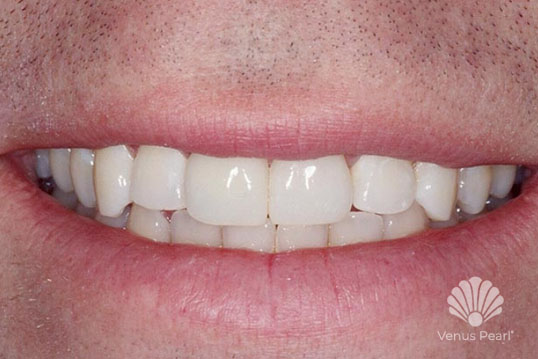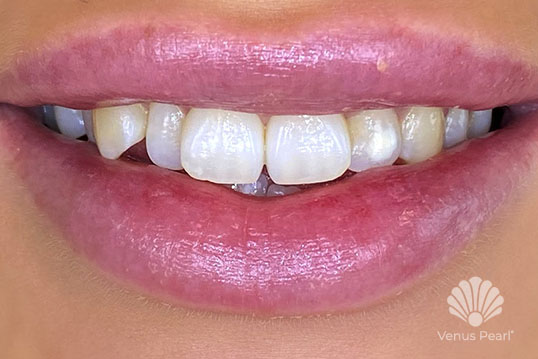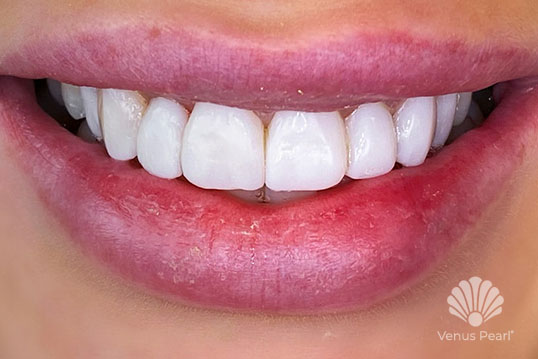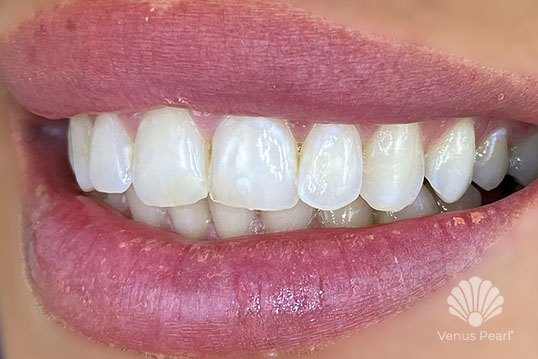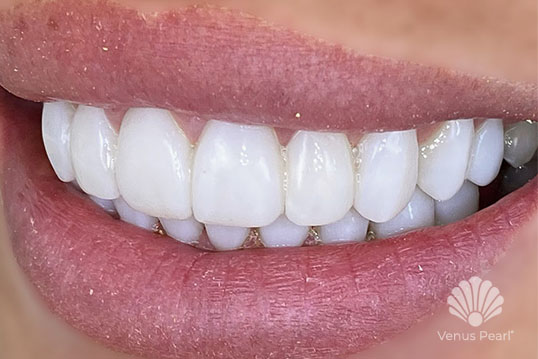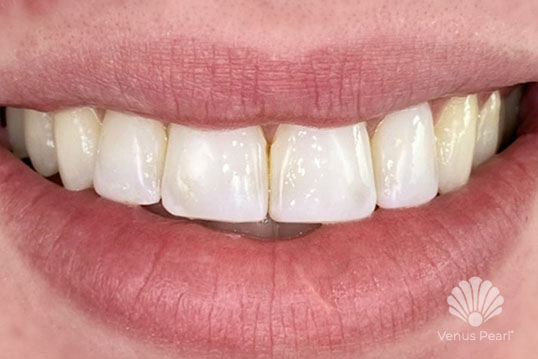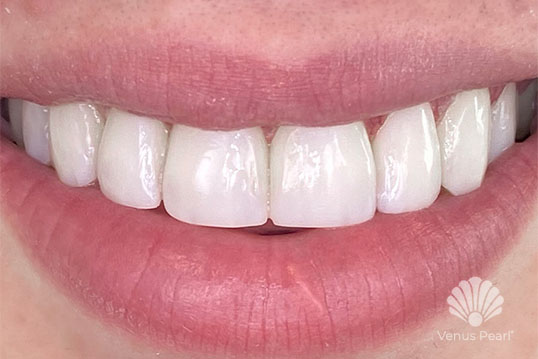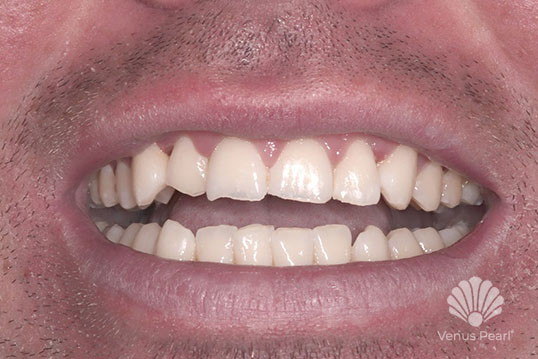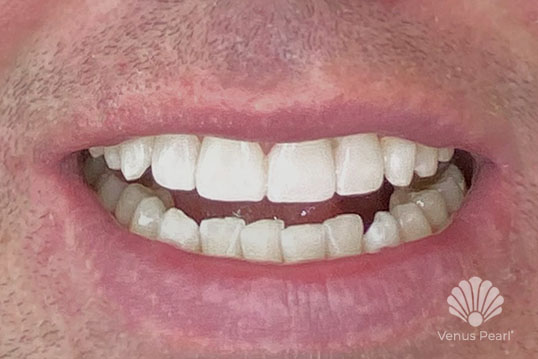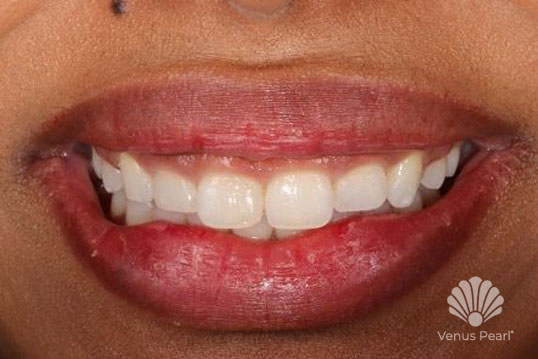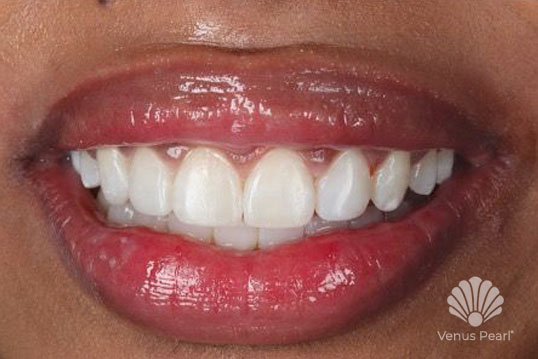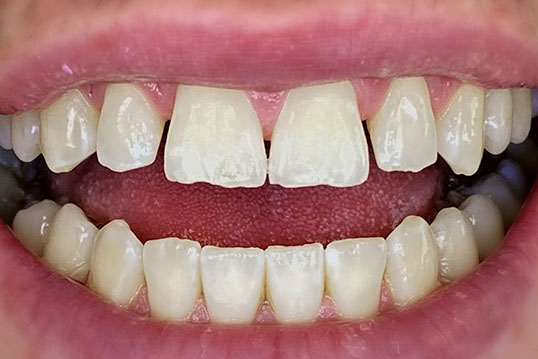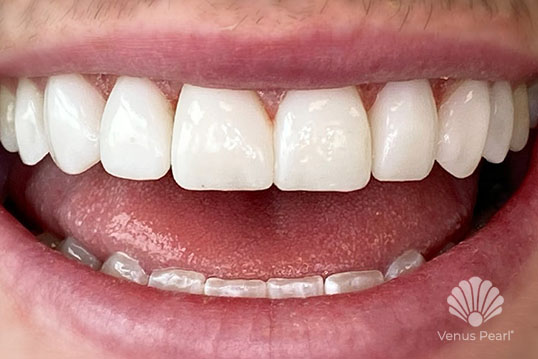What is special about the Venus Pearl chemistry?
Until now, low shrinkage monomer systems, such as BIS-GMA, had to be combined with reactive thinners on account of their low viscosity. However, these thinners raise the shrinkage of the monomer matrix. Venus Pearl is based on the same monomer system as Venus Diamond. A patented monomer (TCD-DI-HEA), which combines low shrinkage and low viscosity, is used in both composites. The use of reactive thinners is not required and so the positive properties like low shrinkage for example, are maintained
Why does Venus Pearl contain a prepolymerised filler?
The prepolymerised filler in Venus Pearl replaces the filler used in Venus Diamond with a larger particle size (up to 20 μm) so that the creamy consistency is guaranteed with easier polishability.
Does Venus Pearl contain BPA?
No, Venus Pearl is BPA-free.
Venus Pearl has a consistency that is rather creamy, but still stable. I prefer a firmer composite (in general, or e.g. only for the posterior region). Which composite would you recommend to me?
Kulzer offers a firmer alternative to Venus Pearl with Venus Diamond - depending on the preference and indication of the dentist. Kulzer now offers two nano-hybrid composites with different consistencies, Venus Diamond and Venus Pearl, that are both based on the innovative and patented monomer matrix, which has advantageous physical properties.
What do the prefix ‘O’ and suffix 'C' mean in the Venus Pearl opaque shade colour names?
The prefix ‘O’ (e.g. OLC, OMC etc.) stands for ‘Opaque’. These shades are the least translucent of all Venus Pearl shades. The suffix C in the opaque shades means "chromatic" and emphasis the intensive chroma of these shades.
Why does the material seem matt during layering?
During processing very little monomer appears on the surface. This is completely normal for Venus Pearl. Monomer on the surface would increase stickiness and therefore hamper handling.
Can I use a flow composite as a liner in the cavity?
Venus Pearl can be used with commercially available flow composites. The use of a flow material is recommended, especially in deep or large cavities in order to adapt to the surfaces of the cavity preparation. We recommend the flowable nano-hybrid composite Venus Diamond Flow to complement Venus Pearl.
Venus Diamond and Venus Pearl are both based on the same monomer system. How do you explain the difference in consistency?
The difference in consistency is explained by two adapted filler systems: Venus Pearl has a particle size distribution of 5 nm – 5 μm, and in comparison to Venus Diamond, it contains a prepolymerised filler. In addition, Venus Diamond has a wider particle size distribution of 5 nm - 20 μm.
What are prepolymerised fillers?
Prepolymerised fillers were originally developed for microfiller composites that are known for their particularly good polishability. These prepolymerised fillers are based on polymers that are filled with very small SiO2 particles. These organic fillers allow excellent polishability on the basis of their reduced hardness.
How many levels of translucency are there within the Venus Pearl range?
Venus Pearl offers three translucency levels: The opaque dentine shades (e.g. OLC, OMC, ODC and OXDC) have the lowest translucency in the respective ranges. These shades with increased colour intensity are used to cover amalgam tattoos and discoloured teeth and restore dark class V cases. The universal shades (Vita shades, A.., B.., C.., D..) possess colour intensities of medium translucency and are available in a large range. They can be used without additional layering or can be combined with opaque dentine and incisal shades to achieve aesthetically pleasing results. The incisal shades are the crowning glory, offering utmost transparency and minimum colour intensity. They form the enamel layer.
Does a softer consistency also mean increased stickiness?
No, our goal during the development of Venus Pearl was to maintain the advantageous handling properties of Venus Diamond like low stickiness. Because of its special formulation, Venus Pearl demonstrates a softer consistency without an increase in stickiness. This has been confirmed by comprehensive user tests involving more than 100 established dentists in Europe and the USA.
How can I determine the exact shade of Venus Pearl to be used?
Besides the Venus Pearl Shade Guide, a small sample of Venus Pearl can be polymerised directly on the tooth. The colour matching effect arising after polymerisation is easy to assess prior to treatment.
Which adhesive systems can I use?
Venus Pearl can be used with commercially available bonding agents. We recommend iBOND Universal or iBOND Total Etch. It is important that the adhesive layer forms an even, thin layer everywhere in the cavity.


